5 Vibrant Tanager Bird Species to Know
Updated: Sep. 20, 2022
Meet the five types of tanager bird species you might see in North America. Learn to identify tanagers and how to attract them.
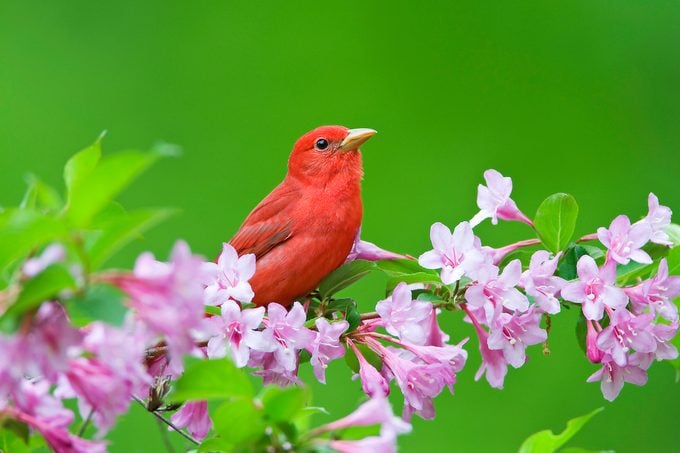
A flash of red or yellow among dense foliage, followed by a husky song floating down from the treetops—it’s a common performance tanagers put on every summer. Four birds with tanager in the name are widespread in North American forests, and the males are among the most colorful songbirds. One or more of these tanager bird species is found practically everywhere in the Lower 48 states and southern Canada in summer, along with another occasional visitor.
In addition to vibrant, flashy colors that light up a forest, tanagers share a distinctive bill shape. Moderately thick, it’s ideal for feeding on large insects and small fruits. Their whistled songs and sharp, distinctive callnotes ring out as they move slowly and deliberately through the high branches of the forest canopy.
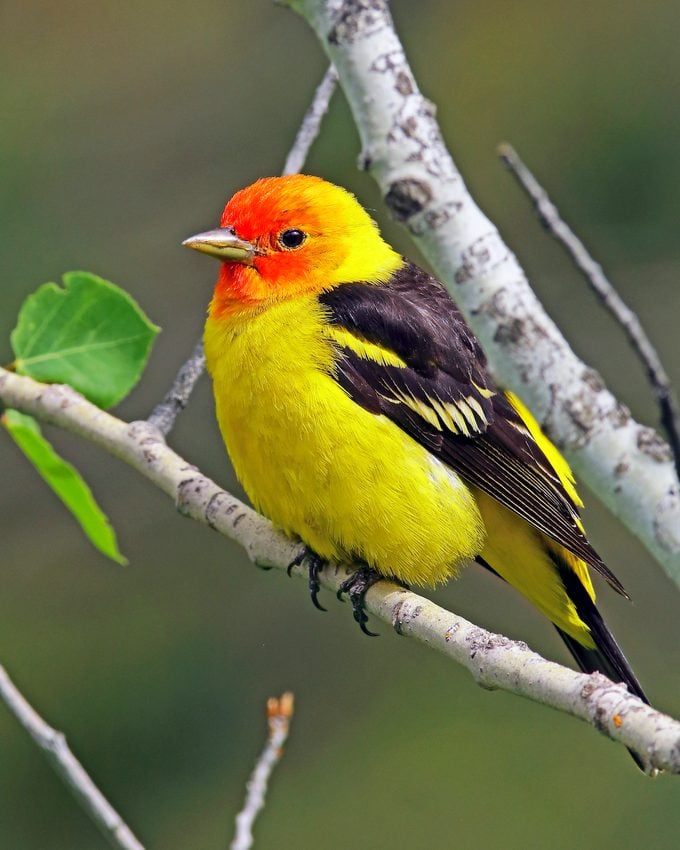
The most surprising thing about North American tanagers is that they are not tanagers at all—meaning they don’t actually belong to the tanager bird family. Scientists recently determined that the five birds mentioned here are more closely related to cardinals, grosbeaks and buntings. But their names have been well-established for so long that name changes to “scarlet cardinal” or “summer grosbeak” are extremely unlikely.
Scarlet Tanager
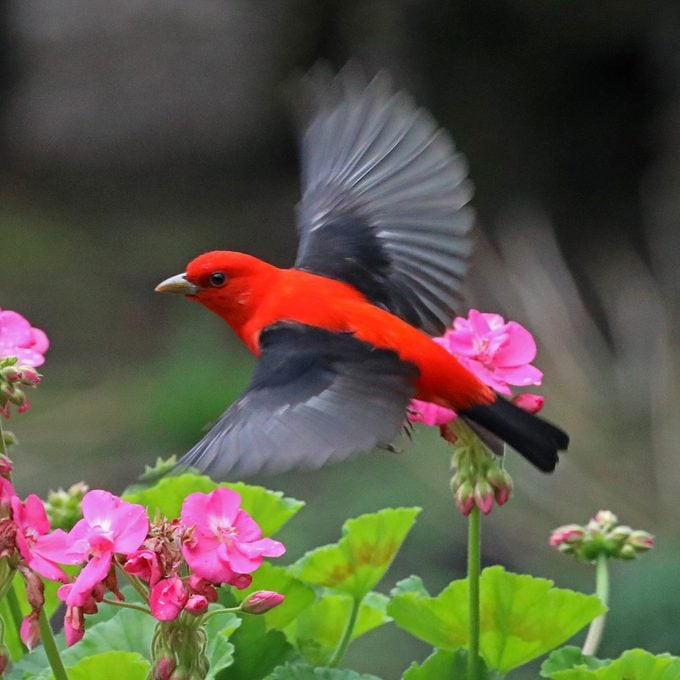
The most famous and recognizable member of the group is the scarlet tanager. An adult male is unmistakable in summer: brilliant scarlet red, with black wings and tail. The female is more subtly colored, sporting soft yellow-green with darker wings and tail. It makes sense for her to be camouflaged, because she builds the nest—usually high in an oak tree—and incubates the eggs. However, the male scarlet does step up to help feed the young.
Throughout summer, scarlet tanagers are widespread in the eastern states and southeastern Canada, mainly in forests dominated by oaks. They spend winters in lowland rain forest areas of the Amazon basin in South America.
Before migrating south in fall, males perform a costume change, molting their bright red feathers and replacing them with yellow-green tones like those of the female. Males go through another molt in late winter before heading north. When they reach the eastern woods, they have the brilliant colors you know and love. Scarlets announce their annual arrivals with a hoarse, whistled song, like a robin with a sore throat.
Attract scarlet tanagers to your yard with grape jelly and oranges.
Summer Tanager
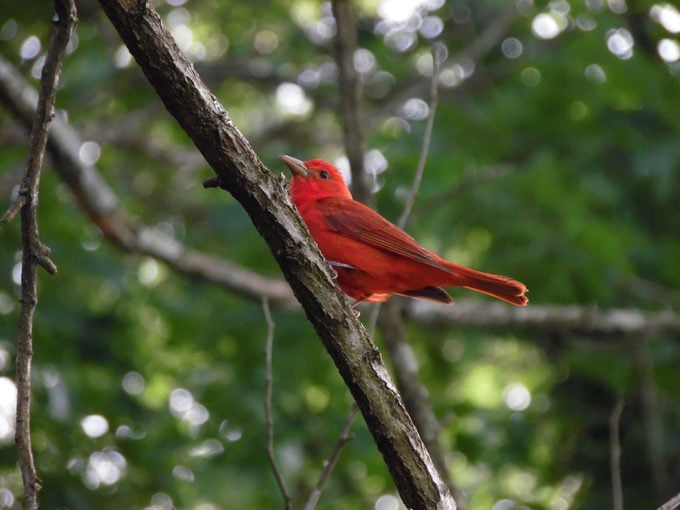
All across the southern United States, from California to the Carolinas, a slow, lazy, robinlike song is a sure sign that a summer tanager is present. Even if it isn’t singing, you may hear its characteristic callnote, a snappy pick-i-tuck.
Summer tanagers sound the same across their range, but they favor different habitats in different regions. In the Southeast they are common in oak and pine forests. Those in the Southwest concentrate in tall cottonwood trees along lowland rivers. In fall they migrate to tropical wintering grounds that stretch all the way from Mexico to South America.
Contrary to what the moniker might suggest, and unlike the male scarlet tanager that is red only in spring and summer, the male summer tanager keeps his bright red colors in all seasons.
A nickname for summer tanager is “beebird,” because it eats many wasps and bees, sometimes catching them in midair. Summer tanagers will catch wasps and rub them against branches to remove their stingers before eating them. Afterward, they’ll eat the larvae left in the hive. To coax summer tanager birds to your yard, try leaving out sweet treats like blackberries and overripe bananas, which will attract bees, too.
Check out 7 backyard birds that eat berries.
Western Tanager
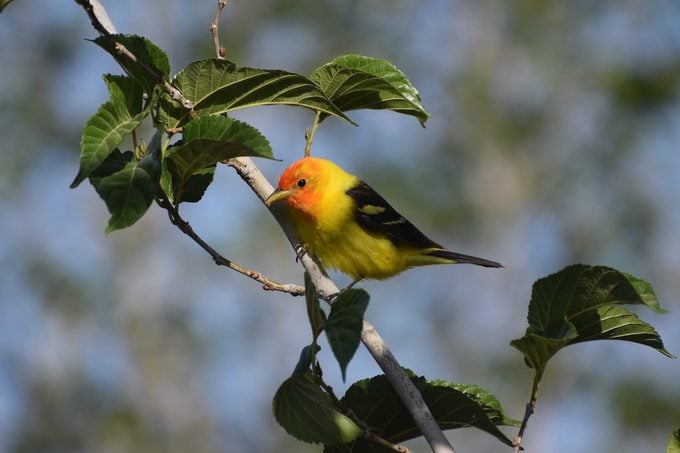
West of the Great Plains lives another tanager with a more varied color pattern. A male western tanager is a flashy bird with a bright yellow body, red head, black tail and wings. Its wings have yellow or white bars. Females are a paler yellow with gray wings, but they show the same wing bars.
Western tanagers spend the winter mostly in forests of Central America. During migration, they may stop over anywhere, from western backyards to the desert. For the summer, they head to cool forests of pine, spruce or fir, from high mountains of the Southwest all the way to northwestern Canada.
Attract these birds to your backyard with oranges, sugar water and native plants, which draw in bugs for tanagers to eat. Western tanagers have also been known to eat suet during cold snaps.
Check out 11 gorgeous photos of western tanagers.
Hepatic and Flame Colored Tanager
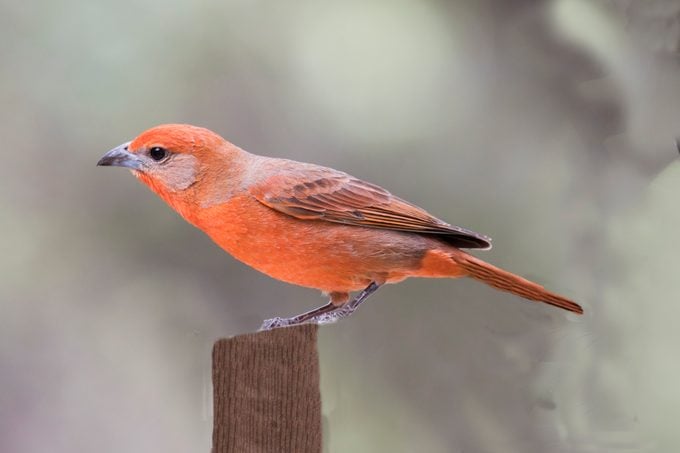
In mountain pine forests of the Southwest, from southern Colorado to Arizona and western Texas, a pair of tanagers—a red male and yellow female—might look like summer tanagers at first glance. But the male is a more brick red color, not rose-red like a summer tanager, and the female is a richer yellow with gray cheeks. These are hepatic tanagers, members of a tropical species that’s found all the way south to Argentina.
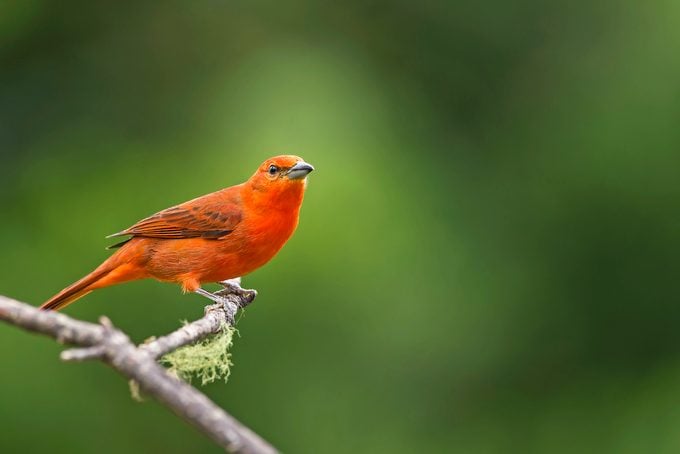
Hepatic tanagers are barely migratory, just withdrawing from the northern edge of their range in fall. A few can be found in Arizona even in winter. They eat mostly insects, such as caterpillars and beetles, but also enjoy berries, especially in late summer. Hepatic tanagers get their name from the male’s liverlike coloring.
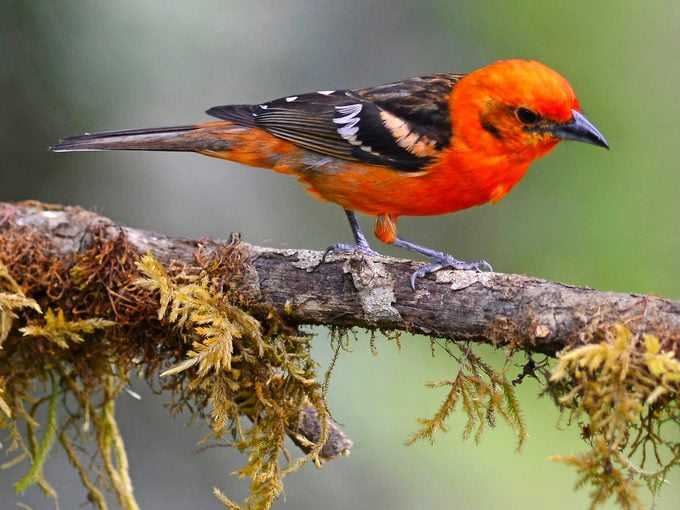
In addition to the scarlet, summer, western and hepatic, a fifth type of tanager is a rare visitor. The flame-colored tanager was never found north of the Mexican border until 1985, when a male appeared in Arizona’s Chiricahua Mountains. Several have been found since, in mountains of southern Arizona and western Texas.
Discover the top 5 birding hotspots in southeast Arizona.
Attracting Tanagers
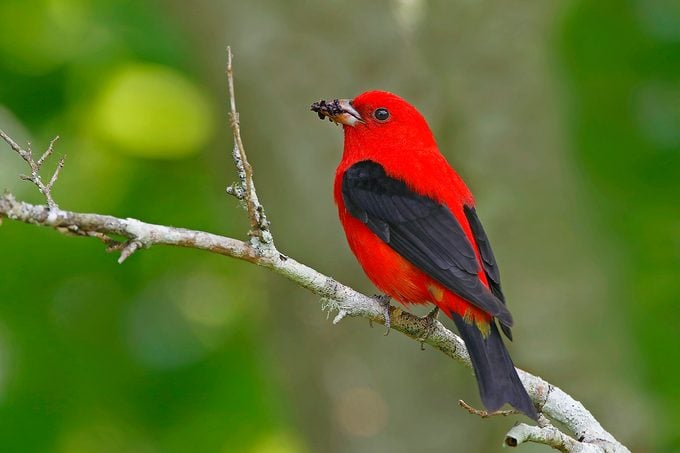
These birds are choosy about nesting sites, so they won’t stay for the summer unless you live close to forest land. But passing migrants might show up almost anywhere in spring or fall. Entice a tanager bird with fruits like bananas, orange halves or sliced watermelon. A water source is the best way to attract them. Try a bird bath with a dripper or small fountain that creates the sound of trickling water.
Whether it’s a rarity like a flame-colored or a more widespread species like a scarlet or summer, any sighting of a tanager adds a pop of color and excitement to your time spent outdoors.
The Real Tanager Bird Species
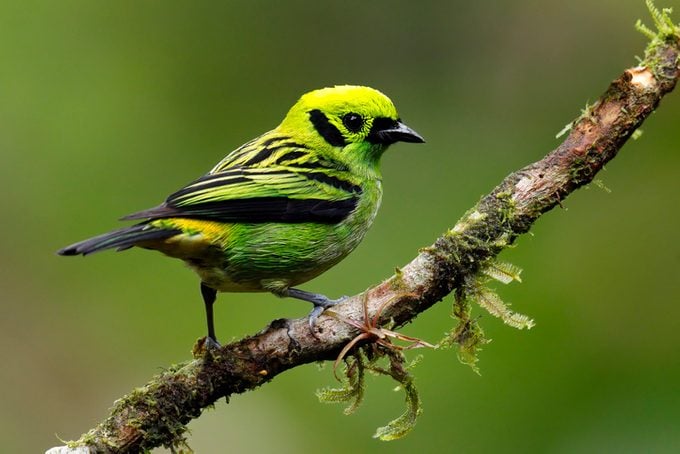
In the American tropics, tanagers are some of the most brilliantly hued songbirds. A traveler to some parts of South America might see more than 30 kinds of tanager birds, displaying a brilliant rainbow of every color imaginable. The medium-sized songbirds have thick bills. Some of them look similar to birds like the scarlet tanager or summer tanager. Researchers now know they’re not related.
Next, discover the colorful hummingbirds of Costa Rica.
